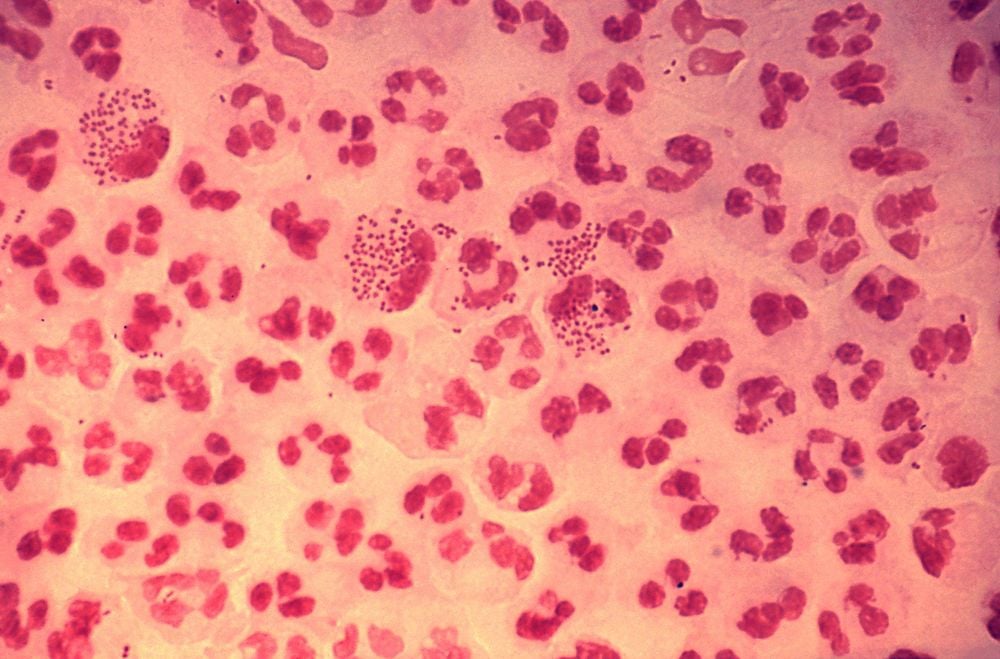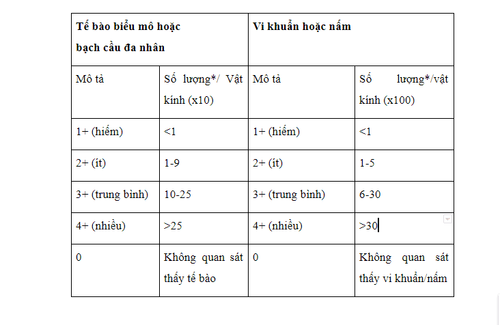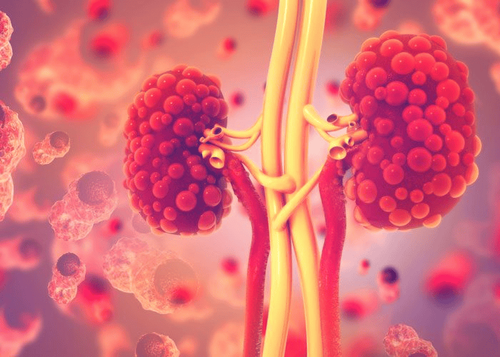This is an automatically translated article.
Urinary tract infection is a very common disease in both adults and children. Urine gram stain is a meaningful subclinical test, helping doctors assess the level of infection, identify pathogenic bacteria, and then find more effective treatment methods.
1. What is a urinary tract infection?
Urinary tract infection is a very common disease, which can affect everyone from the elderly to children, even infants. It occurs when bacteria enter the urinary tract and cause an infection. Based on the anatomical location, it can be divided into lower urinary tract infection and upper urinary tract infection. Lower urinary tract infections corresponding to bladder, urethra, prostate gland; kidney-related upper urinary tract infections.
The common bacteria causing urinary tract infections are E.coli, Klebsiella, S.saprophyticus, P.aeruginosa,... Bacteria enter the urethral system in three ways: from the bottom up, through the bloodstream and lymphatic system. The rate of urinary tract infections in women is higher than in men because women have a shorter urethra and closer to the rectum, making it easier for bacteria to enter.

E.coli gây nhiễm khuẩn tiết niệu
2. Symptoms of a urinary tract infection
Symptoms of urinary tract infections can vary between subjects.
2.1 For adults In adults, the common signs are:
Lower urinary tract infection: Difficulty urinating, painful urination, frequent urination, nocturia, pain on the pubic bone, possibly hematuria, possibly fever or not. Upper urinary tract infection: The patient has pain in the lower back, high fever, fatigue, nausea, rapid deterioration in physical condition. 2.2 For the elderly For the elderly, when a urinary tract infection is present, there may be no typical urinary tract symptoms, but may be manifested by changes in mood, eating habits, and symptoms of gastrointestinal disorders. chemical.
2.3 For Children Urinary tract infections in young children can experience symptoms such as fever, vomiting, irritability, lethargy, poor appetite, slow weight gain. In rare cases, the child may develop hematuria and jaundice.
Due to the variety of symptoms, to accurately diagnose urinary tract infections, in addition to clinical examination, the doctor will assign patients to perform some tests such as: urinalysis, gram stain of water urine, bacterial culture,... Gram staining of urine is a fairly common method, which helps to classify bacteria based on the shape, arrangement and coloration properties of microorganisms.

Hình ảnh nhuộm gram nước tiểu
3. Urine gram staining technique in diagnosing UTIs
3.1 How to collect a urine sample for gram staining There are 3 ways to collect urine for gram staining:
Midstream urine collection: The patient will be given a sterile urine collection tube, urine will be collected. morning. The patient was instructed to clean the genitals, to remove the first drops of urine, and then to collect approximately 10 ml of urine into a collection tube, which must be completed before voiding is stopped. Catheter collection: the catheter will be placed through the urethra to the bladder, urine will flow into the urine container. Although this method reduces the risk of urine contamination from outside, it is easy to cause infection upstream. Pubic aspiration urine collection: A needle is inserted through the skin in the lower abdomen to the bladder to collect urine. This method is difficult to implement, so it is only applicable to young children or adults with urinary retention. Urine samples after collection must be tested immediately, not more than 4 hours under normal conditions. If refrigerated, do not keep for more than 18 hours.
3.2. Urine Gram Staining Technique The technician will shake the urine tube well, then pipette 10μl of urine onto the slide, without spreading the slide. The specimen will be left to dry naturally or at 60oC. Stain the slide with titanium gel purple solution, Lugol's solution, decolorize with 90o alcohol, then stain with fuchsin red solution (can be replaced by safranin solution). After each step of staining, bleaching, and specimens were washed under gentle running water.
Due to the difference in composition, cell wall structure, bacteria will catch different colors when stained with gram. Because the cell composition is rich in teichoic acid, the thick peptidoglycan layer is not bleached with alcohol, so when staining Gram-positive bacteria, the purple color remains as it was. Meanwhile, gram-negative bacteria have a cell membrane that is easily destroyed by alcohol when bleaching, so the bacteria will lose their purple color and turn red of the fuchsin dye.
After staining, the specimen will be dried and examined under the microscope. The test technician will count the number and describe the bacterial cell types based on the observation of the shape, size, and properties of gram negative (red catch), gram positive (purple color), ..
Urine gram staining results are evaluated based on the following table:

After observing under the microscope in at least 10 fields, the test technician will record the results on the results answer sheet and send it to the treatment departments.
The urine gram stain test results will help the doctor assess the level of infection, orient which bacteria cause urinary tract infections, thereby having a more effective treatment plan for the patient.
To register for an examination at Vinmec International General Hospital, customers can contact Vinmec Health System nationwide or register online HERE.
MORE:
Meaning of blood and urine tests in a general health checkup package PH index in urine tests When to do a urine test during pregnancy













